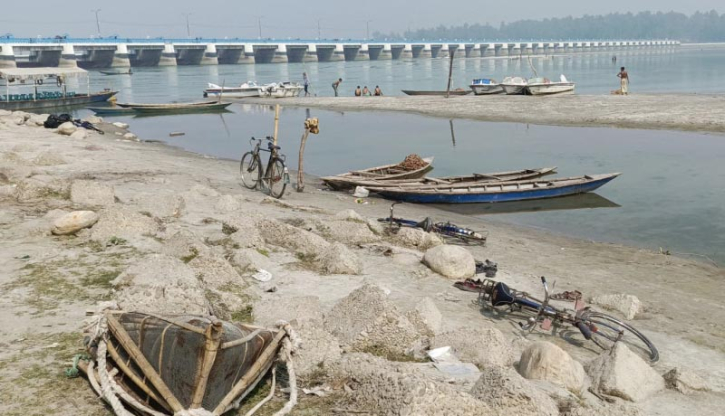Teesta cries for survival as northern Bangladesh's lifeline runs dry

Once a roaring symbol of life and prosperity in northern Bangladesh, the Teesta River now lies gasping for survival — its once vibrant waters replaced by endless stretches of parched sand. The river that sustained over two million people has dwindled into a shadow of its former self, threatening livelihoods, food security, and the ecological balance of the region.
By late October, the Teesta had already dried up — weeks before the start of the usual dry season. Officials at the Bangladesh Water Development Board (WDB) reported that water flow at the Teesta Barrage had dropped to an alarming 17,000 cusecs, the lowest in years, and continues to fall.
The crisis has left farmers and fishermen desperate. “We are dying along with the river,” said Abdul Karim, a farmer from Lalmonirhat, who once relied on the Teesta’s fertile basin for his crops. Once-famous farmlands now lie cracked and barren, while fishers’ boats rest idle on dry sand.
Experts and environmentalists have long blamed India’s upstream water diversion projects, particularly the Gajoldoba Barrage in West Bengal and Doani Barrage in Lalmonirhat, for choking the Teesta’s natural flow. Constructed in 1983, these structures disrupted seasonal water distribution — causing severe droughts during dry months and floods during monsoon.
The river’s navigability has fallen sharply, threatening the operation of the Teesta Barrage Irrigation Project, Bangladesh’s largest irrigation scheme. Large sections of the riverbed now stand exposed, dotted only with shallow puddles and sand dunes. WDB officials warn that irrigation for the upcoming dry season could be severely disrupted, jeopardizing crop yields across Rangpur, Nilphamari, and Gaibandha.
Originating from Himalayan glaciers, the Teesta flows through Sikkim, Darjeeling, and Jalpaiguri before entering Bangladesh through Lalmonirhat’s Dahagram. It once supported an agricultural boom — producing rice, jute, maize, and vegetables — and nourished an entire culture built around river-based livelihoods.
But that legacy is fast eroding. In the past decade alone, over 20,000 families have been displaced due to river erosion, with nearly 35 kilometers of riverbank lost. Recently, a 350-meter stretch of the Teesta bridge protection embankment at Mahipur in Lalmonirhat collapsed into the river. In Kurigram’s Ulipur, over 100 homes have been washed away, while dozens more were destroyed in Rangpur’s Gangachara.
The devastation has fueled widespread anger across northern Bangladesh. Under the slogan “Save Teesta, Save North Bengal,” thousands of residents recently formed a 48-hour human chain along a 115-kilometer stretch of the river — demanding immediate action on the Bangladesh-India Teesta water-sharing treaty and the Teesta Master Plan.
Environmental researchers warn that if immediate measures are not taken, the Teesta — once a lifeline of North Bengal — could soon become an ecological dead zone. They call for urgent diplomatic engagement with India, basin-wide water management, and local adaptation initiatives, including river dredging, embankment repairs, and alternative livelihood programs.
.png)









